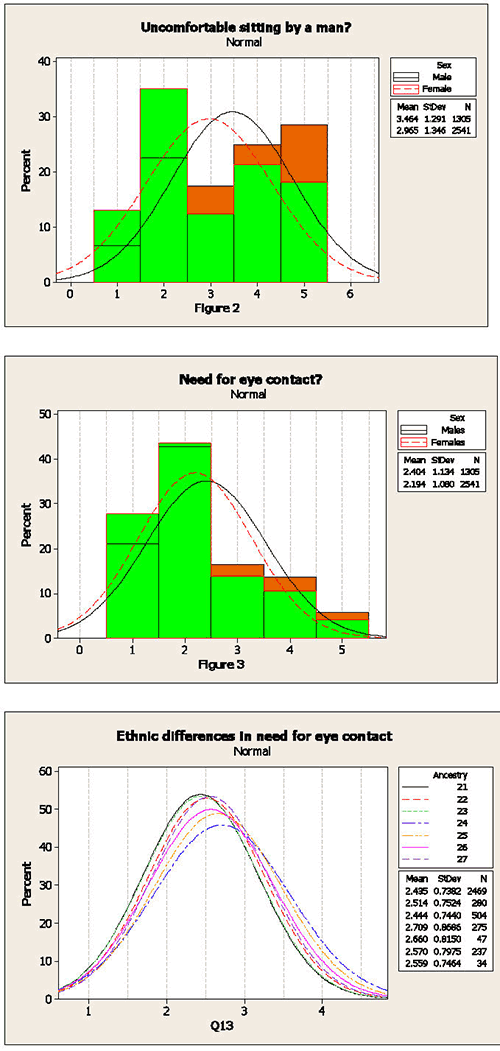Do women generally need more eye contact than men in casual conversation?
In my seminars on interpersonal negotiation skills, communication, conflict management and mediation skills we often speak about cultural and gender differences. Do Hispanics really make less eye contact than non-Hispanics? Do men or women expect or require more eye contact as a general rule? Do men touch women more than women touch men in casual conversation? Proxemics (personal space), haptics (touch), and kinesics (body and face) are names given for studies in these topics that attempt to answer such questions.
An increased understanding of these issues is important for improving our day to day interactions with others. It would be a mistake to take the results of these research-based studies and stereotype behaviors. It is much better to keep in mind that these sorts of differences exist and be sensitive regarding possible differences, as we deal with others. People within any given culture show greater differences than people between cultures.
With the help of several agricultural trade journals, my electronic forums and my Webpage, I put forth a short survey to help answer some questions on proxemics and related matters. I ended up with more than 3,800 responses in and out of agriculture.

Both men and women report a keen awareness of whether they touch others when they speak. Even so, men, in contrast to women, seem to be more cognizant of their touching behavior. Both men and women also report an acute awareness of whether they have been touched by another when they speak. Men seem slightly more cognizant than women about being touched. Europeans/Caucasians are the most likely to notice they were touched, followed by mixed ethnicity populations and Hispanics. Native populations and Middle Easterners were the least likely to notice they were touched.
Neither men nor women report that women invade their personal space very frequently. Men are a bit less likely (in contrast to women) to feel that a woman has invaded his personal space. Also, neither men nor women report that men invade their personal space very frequently. Men are more likely than women to feel that a man has invaded his personal space, however. Both men and women feel that men invade their personal space more frequently than women do.
At the one extreme, Hispanics (followed by Europeans/Caucasians) are least likely to feel that women invade their personal space. At the other extreme, Middle Easterners (followed by Africans/Blacks) are the most likely to feel women invade their personal space.
Men generally report that women touch them more than they touch women in friendly conversation. Women confirm this observation by stating that they touch men more than men touch them. The literature endorses these results. Studies show that women tend to touch in a more affiliative manner while men tend to use touch as an expression of power.
A greater number of women, in contrast to men report that they require eye contact when carrying out conversation. This makes sense because women generally tend to use eye contact to build affiliation while men may also use it to exert power (Wood, 2011). From an ethnic perspective, Europeans/Caucasians as well as Hispanics reported the greatest needs for eye contact; and Africans/Blacks and Middle Easterners reported the least need for eye contact during conversation. Finally, a greater number of men, in contrast to women, consider themselves punctual (p<0.001).
Some final thoughts
There are differences between the sexes as well as cultures that are worth studying. Becoming aware of some of the areas in which people differ can help us become more attentive and effective communicators. A number of respondents made the point of explaining that in some behaviors (such as eye contact, touch, etc.) they are not typical of their gender or ethnicity. Turning differences into stereotypes may cause more harm than good. When it comes to effective interpersonal communication it is critical to think about individual differences rather than population differences see Cultural Differences? 2009.
We can, however, take some steps to notice other people's preferences and make our own clear. If I need someone's undivided attention I may want to ask this person for a good time to talk. One friend mentioned how our cell phones-whether we are checking our e-mails or texting-often make it so we are less than present for others. We can try to reduce distractions that send others the unintended message that we really are not all that interested in listening.
To read long version click here.
08.09.2012